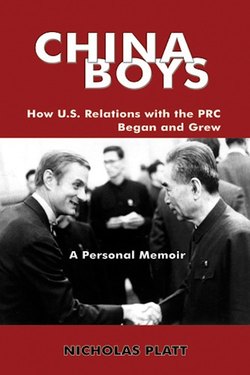Читать книгу CHINA BOYS: How U.S. Relations With the PRC Began and Grew. A Personal Memoir - Nicholas MD Platt - Страница 14
На сайте Литреса книга снята с продажи.
Infant Formulas
ОглавлениеWorld War II had transformed Asian language teaching. The urgent need for speakers and readers of Japanese and Chinese gave rise to a two-track system patterned after the way children learn to speak from their mothers and to read from their schoolteachers. Return to infancy was another rude shock for a twenty-five-year old.
Back in the garage at Arlington Towers at the beginning of 1962, we spent the first three weeks of our course mindlessly hearing and mimicking noises. Our mother was a language lab tape recorder. For six hours a day we drilled in class the four hundred distinct sounds that Mandarin Chinese uses to differentiate meaning. (English has twelve hundred such sounds). It was important to get the tones right. These are really directions of sound, rather than notes. The syllable ma pronounced with a high steady tone means “mother,” with a falling tone means “scold,” with a low dipping tone means “horse,” with no tone at all denotes a question mark, and so on. More dangerously, bi means “pen” with the low dipping tone and a rude word for “vagina” when pronounced high and steady.
The weeks of mime gave way to months of drill on meaning, patterns of grammar, and increasingly complex dialogues that dealt with social interaction, survival in daily situations, and later, history and economics. Seven weeks into the course we started the second track, learning to write Chinese characters, constructing them in the proper stroke order and making them look right. We were responsible for “active” knowledge of about eight hundred characters, which meant we had to know how to replicate the calligraphy precisely. The thousands of characters and combinations we studied later we learned passively, which meant we could recognize them in a text and know what they meant. Our goal was to read the media with speed and competence, rather than draft correspondence.
The pace was a language marathon—six hours of class and three to four hours of homework each weekday for eleven months. My three classmates––Roger Sullivan (later deputy assistant secretary of state for East Asian affairs), Stan Brooks (later consul general in Shanghai), and Tim Manley (who served at our Embassy in Taipei)––were talented, hard working, and humorous. We became fast friends. (The process has been known to create lifelong enemies, too.) Happily, we moved along at more or less the same pace.
Our teachers were skilled and versatile. Mr. Li Tsung Mi was an erudite linguist who knew the origins of the words and ideograms and how they related to one another. Miss Ouyang Chao was an inventive discussant, who forced us to build our halting child vocabularies into real conversations. When we could say and comprehend more, Dr. Ma added substance to our education.
Dr. Ma performed another valuable service. He gave me a real Chinese name. Normally, when naming purple foreigners, the Chinese choose characters that are phonetically as close to the sound of your surname as they can find. They sound all right but don’t mean anything, and identify you clearly as a barbarian outsider. Under that formula, my name would combine three characters with the sounds pu, la, and te. Dr. Ma wanted all of us to have names that sounded roughly right but meant something to Chinese. Pu was a regular surname with only two easy-to-write strokes. To that he added li, to force or propel, and de virtue. So I have gone through life as “Self-Propelled Virtue Pu.” Chinese have always liked the name and invariably ask me how I came by it.
